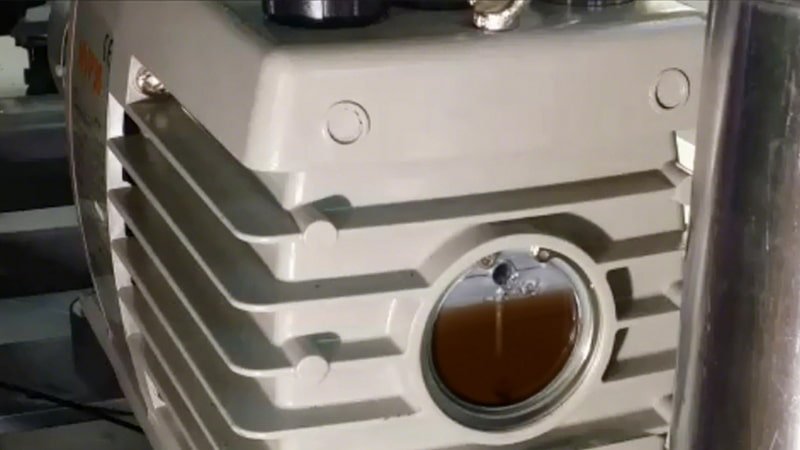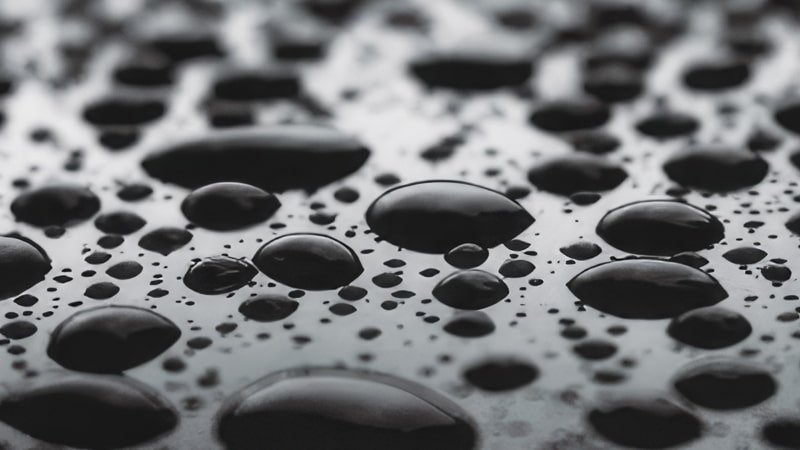You glance at the sight glass on your pump and your stomach sinks. The oil is milky white or, worse, black and sludgy. You know this is a bad sign, but you're not sure if it's a simple fix or a symptom of a catastrophic failure.
Bad-looking oil is a direct signal of a specific problem. Milky oil means water contamination, dark oil means thermal breakdown from overheating, and foaming oil means a massive gas load or solvent contamination. A methodical diagnosis is key.

The oil sight glass is not just a window; it is a live diagnostic report from the heart of your pump. As a specialist who has diagnosed countless pump failures, I can tell you that a change in the oil's appearance is never the root cause; it is a critical symptom. Ignoring it is a recipe for expensive damage.
Simply changing the oil without understanding the "why" just resets the clock on the next failure. An expert follows a process to move from simple observation to a definitive diagnosis, corrective action, and long-term prevention. This is that process.
Protocol A: What if the oil is milky or cloudy?
You see that the oil has turned an opaque, milky white. This is the most common symptom, and it signals a serious threat to your pump's health.
This milky appearance is an emulsion, a clear sign that water has mixed with the oil. This destroys the oil's lubricating properties and dramatically increases its vapor pressure, making a deep vacuum impossible to achieve.

Before you act, you must be 100% certain. This is how we confirm it in the field.
Dive Deeper: The Water Contamination Protocol
An expert confirms before acting. This protocol is non-negotiable.
Step 1: Definitive Confirmation (The "Crackle Test")
- Safely extract a small sample of the milky oil using a pipette or syringe.
- Place a single drop onto a piece of aluminum foil.
- Carefully heat the underside of the foil with a lighter.
- RESULT: SPUTTERING or CRACKLING. This is the sound of water boiling out of the oil. Diagnosis is 100% confirmed.
- RESULT: SMOOTH SMOKING. No water is present. The cloudiness may be from another contaminant. Re-evaluate.
Step 2: Corrective Action (Purge & Replace)
Do not just change the oil; you must remove the residual water.
- Drain the contaminated oil while the pump is still warm to help keep contaminants suspended so they drain out.
- For severe contamination, perform a system flush. Refill the pump with a specialized flushing fluid (or a sacrificial charge of fresh pump oil).
- Run the pump with the gas ballast valve fully open for at least 30 minutes. This allows the pump to ingest air, warm up, and expel the remaining moisture vapor.
- Drain the flushing fluid and refill with the correct grade of fresh vacuum pump oil.
Step 3: Root Cause Investigation (Prevention)
Changing the oil fixed the symptom, not the problem. Now, find the source.
- Is the process generating high water vapor? (e.g., freeze-drying, wet processes). SOLUTION: Install an inlet cold trap or condenser between the process and the pump.
- Is the pump short-cycling? (Running for only brief periods). SOLUTION: Allow the pump to run longer to reach its full operating temperature, which helps vaporize and expel any ingested moisture.
Protocol B: What if the oil is dark or black?
Your oil has turned dark brown or even black, and it may look thick and sludgy. This is a sign that your pump is running dangerously hot.
Dark, black oil indicates thermal breakdown. The oil has been "cooked" past its limits, forming carbon deposits and sludge that will clog oil passages, accelerate wear, and ultimately destroy the pump.

This is a serious condition that requires investigating the cause of the heat before you even think about putting fresh oil in.
Dive Deeper: The Thermal Breakdown Protocol
Confirm the heat hypothesis with data.
Step 1: Definitive Confirmation (The Temperature Check)
- Run the pump under its normal operating load.
- Use a non-contact IR thermometer to measure the temperature of the pump casing near the motor and exhaust.
- Compare this reading to the manufacturer's specified maximum operating temperature (typically found in the manual).
- RESULT: TEMPERATURE EXCEEDS SPEC. Diagnosis is confirmed. The pump is overheating.
- RESULT: TEMPERATURE IS NORMAL. The oil may simply be very old and far past its recommended service life.
Step 2: Corrective Action (Cool Down & Replace)
Do not simply change the oil, as the new oil will suffer the same fate.
- Shut down the pump and resolve the overheating issue first (see Step 3).
- Once the pump is cool, drain the dark, degraded oil.
- For sludgy oil, a system flush is mandatory to remove baked-on deposits from internal passages.
- Refill with fresh, high-quality vacuum pump oil. Consider upgrading to a full-synthetic oil, which has a much higher heat tolerance.
Step 3: Root Cause Investigation (Prevention)
Find the source of the excessive heat.
- Is ventilation blocked? SOLUTION: Ensure at least 6 inches of clearance around the pump's cooling fins and fan. Clean away all dust and debris.
- Is the ambient temperature too high? SOLUTION: Move the pump to a cooler location or improve room ventilation with fans or AC.
- Is the pump operating at too high a pressure? (Running against a large leak or constant high throughput). SOLUTION: Fix system leaks or specify a pump better suited for the required pressure range.
Protocol C: What if the oil is foaming excessively?
You see the sight glass filled with froth and foam during operation. This is not normal bubbling; this is an emergency condition that requires immediate action.
Foaming oil indicates a catastrophic loss of lubrication and is a sign of either a massive air leak (high gas load) or chemical solvent contamination. The pump must be shut down immediately to prevent seizure.

When the oil turns to foam, it can no longer create a lubricating film between the moving parts. Metal is grinding on metal, and catastrophic failure is seconds away.
Dive Deeper: The High Gas Load Protocol
The cause is external. Your confirmation test is to analyze the system and process.
Step 1: Definitive Confirmation (System & Process Audit)
- Check for massive air leaks. Can you hear a loud hissing sound from the inlet side? A disconnected hose or a failed gasket can cause this.
- Audit the process. Are you pulling a vacuum on a container of volatile substances like acetone or alcohols? Has a new chemical been introduced?
- Smell the exhaust (carefully). Does the pump exhaust have a strong chemical smell that matches a process solvent?
- RESULT: A "YES" TO ANY OF THE ABOVE. Diagnosis is confirmed.
Step 2: Corrective Action (Emergency Shutdown & Decontamination)
- SHUT DOWN THE PUMP IMMEDIATELY.
- Isolate the pump and ventilate the area if chemical solvents are suspected.
- For solvent contamination, a multi-cycle flush with a compatible flushing fluid is mandatory to remove all traces of the solvent.
- For a massive air leak, fix the leak first.
- Refill with fresh oil only after the root cause is solved.
Step 3: Root Cause Investigation (Prevention)
The pump is not suited for the application, or the process is out of control.
- Is this a solvent application? SOLUTION: You MUST install an appropriate inlet trap (like a liquid nitrogen cold trap) to catch vapors before they reach the pump. Alternatively, you must upgrade to a pump with higher chemical resistance (e.g., a PFPE-prepared pump).
- Is this a massive air leak? SOLUTION: Conduct a full system leak detection and repair before placing the pump back in service.
Final Thoughts
Your pump's oil is a diagnostic tool. By following a professional protocol, you move from guessing to knowing, saving your equipment, your time, and your money.


